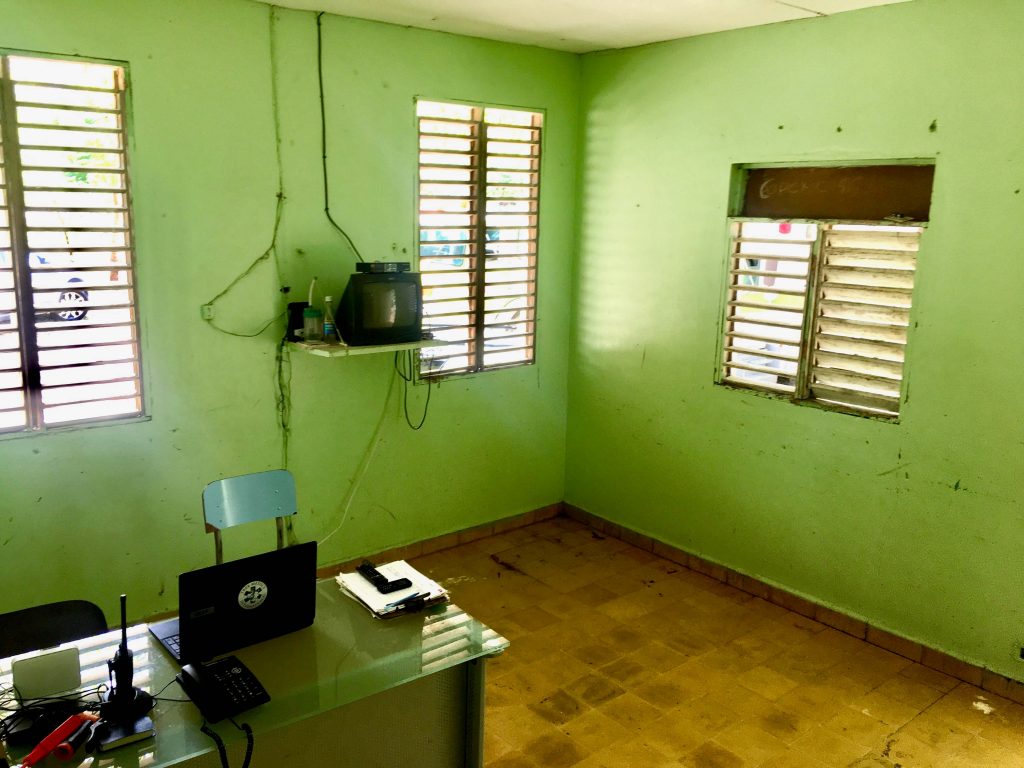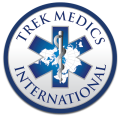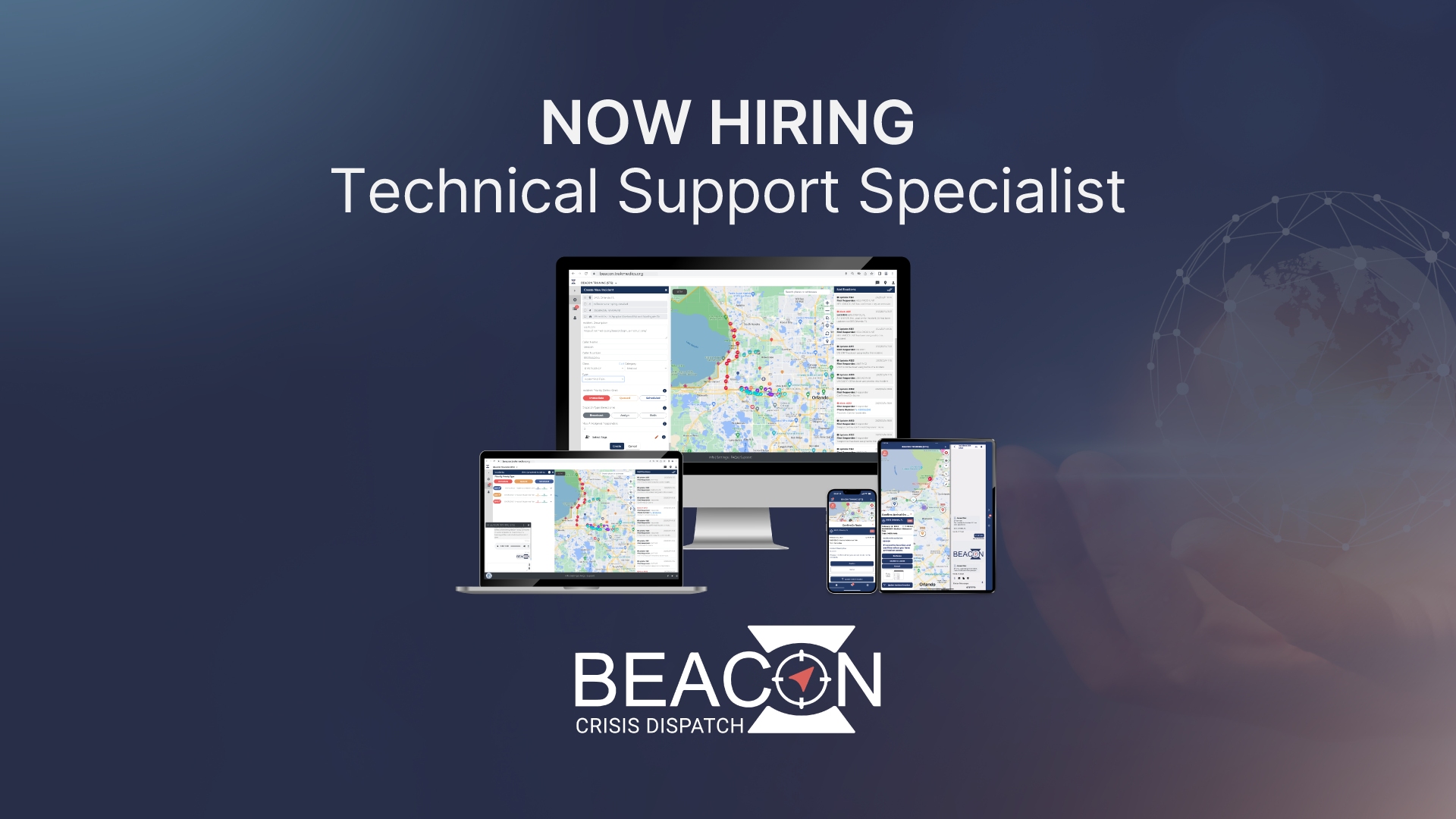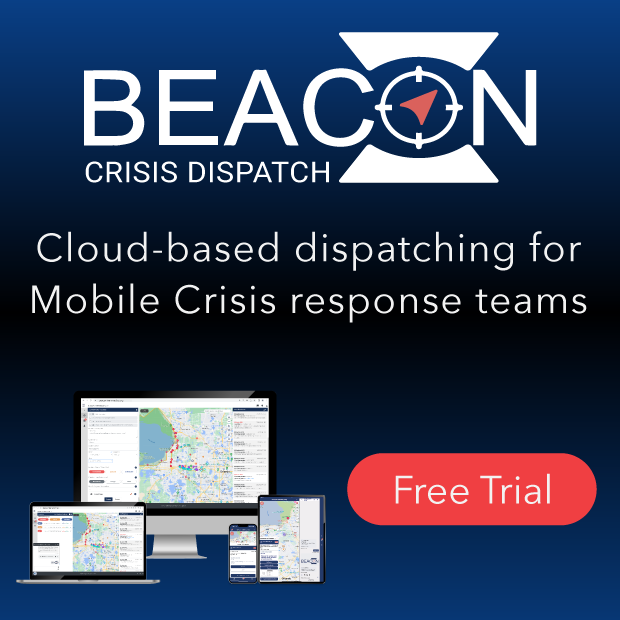How to Prepare for a HurricaneBuilding a Crisis Response Network
Lessons learned from many hurricanes in many countries
Photo courtesy:

The purpose of this post is to share a few of the biggest and most basic lessons about how to prepare for a hurricane with Crisis Response networks before, during and after a hurricane strikes.
If your community already has a response team, you can get the Beacon emergency dispatch platform up and running yourself in less than 30 minutes by clicking here:
BEFORE THE HURRICANE HITS
1. Act Like The Hurricane’s Going To Hit Your Community Head On

We’re not saying panic, but the best way to prepare for a hurricane is to prepare for the worst case scenario. No matter how many warnings or mandatory evacuations are issued, people are going to stay behind — this may even include you. Understanding a little about your community’s vulnerabilities and resources will go a long way in making sure a Crisis Response network will be best prepared to give help when and where it’s needed. A few things to consider:
1. Where’s damage and flooding expected to be worst?
- Check your local community’s risk assessment maps (hopefully accessible from the municipal/county/state website)
2. Where do the most vulnerable populations live?
- Are there skilled nursing facilities? Special needs communities? Populations living near high-risk industrial areas?
3. What kinds of problems have happened in the past?
- This is the best way to prepare for whatever’s coming, so make a call to your local historian and ask them about the last time the 50- or 100-year storm hit town
4. Know your own preparedness
- Making basic preparations to be able to leave rapidly or stay on your own for several days or more will be the difference between being a victim and being part of the solution. Have a plan, have a kit, have a go-bag, and if you are really into this, take a first aid course, build relationships with your neighbors and run some drills
While history is considered to be the best predictor of what’s possible in the future, our climate is changing and communities are, too. So try to think holistically, not getting fixated on only a few doomsday scenarios. It may be convenient to assume that the neighborhood on the hill isn’t at risk of flooding, but if that community’s surrounded on all sides by flooded neighborhoods, they will soon find themselves cut off from help as time goes on. Remember: Some of the hardest hit areas this year and last are experiencing 1,000 year flooding events. While extreme events are supposed to be rare, history can clearly be misleading.


BEFORE THE HURRICANE HITS
2. Familiarize Yourself With Available Emergency Resources

HELP THAT ACTUALLY HELPS
Help isn’t help unless it’s seen as help. Included here is a list of roles and responsibilities we’ve seen where community groups have successfully supplemented formal first responders in the event of a major hurricane
- Evacuations
- Traffic control
- Pet retrieval
- Wellness checks
- Mobility assistance
- Search and rescue, when resources are overwhelmed
If you live in a highly populated area, it’s very possible you have a range of emergency responders and resources available, including emergency medical services (EMS) providers, fire and police departments, a department of public health, hospitals and community-based organizations, like the community emergency response team (CERT) or civil protection.
If any or all of these responders exist, they will have plans and protocols to follow so it’ll be helpful to know what they are as best you can ahead of time. But things can change, too, and all resources eventually meet their limit: As the flooding from Harvey spread, Houston and Harris County’s 9-1-1 call centers became overwhelmed by calls requesting assistance, many of which were for non-life-threatening situations which had the potential to keep true life-threatening calls from getting through. Knowing the limits of formal resources is good info to have, so here’s a list of questions to help you figure this out:
1. What’s their mandate?
When will they respond? When won’t they respond? During peak rainfall and winds, formal responders may be prohibited from rendering aid (as they should be).
What will they respond to? What won’t they respond to? If there’s significant flooding in an area, they may be prohibited from rendering aid if the conditions are too dangerous or their equipment is not adequate. On the other hand, they may also decline non-threatening requests, like wellness checks or cats in trees
2. What type of resources do they have available and how much/many?
A fire department may have a swift water rescue team, but they may only have one
3. How will they be announcing information to the public?
Will they use social media, the radio, TV, all of the above? When will official announcements be made? Will there be a regularly scheduled press conference?
Once you’ve gathered this information, you will have a much better idea of what resources are needed, and at what point local responders could get overwhelmed. For a Crisis Response network this information represents the threshold between being seen as a nuisance by formal first responders and being seen as a blessing.
BEFORE THE HURRICANE HITS
3. Recruit Responders and Resources to Fill Gaps

Recruitment is essential. Three questions will help a Crisis Response network determine who’s best suited for a range of response activities:
1. Who are they?
Background checks would be nice, and pre-established programs will have a greater ability to perform them, but for spontaneously formed response groups they’re likely well beyond available resources and the window of need. Nonetheless, some checks are in order and shouldn’t be overlooked: Personal references, professional licenses, and basic online searches will go a long ways in determining a relative level of trustworthiness. The main point is to avoid people who are looking to take advantage of the confusion, as well as people who say they can do more than they can. For example, a physician’s assistant is not a physician, just as an EMT-Basic is not a Paramedic. Some skills have a bit more gray area: Hobbyist/weekend electricians can help with a lot, for example, but they’re still not card-carrying members of the local electrician’s union. All are useful, and the worse the damage, the greater the needs will be, but each has a role to fill and no one should try to be someone they’re not.
2. What do they bring to the effort?
Are they offering physical resources, like boats, vehicles, supplies, food? Or are they offering skills and experience, like medical care, search and rescue, computer programming, mapping or logistics? All of these roles are important in a hurricane response. Being explicit about what you’re looking for, and organized in how you recruit and bring them onboard, is an invaluable process that will set the tone for the rest of your efforts.
3. How long can they volunteer for?
- The sooner you find this out, the better for everyone. Relying on people who are inspired, but not committed, can lead to overpromising the assistance you can offer and ultimately losing the confidence of the population you’re trying to assist. Nothing is more demoralizing than being told help is on the way when it’s not — and news spreads even more quickly in a disaster when word-of-mouth is all anybody has to rely on


Everyone in the United States knows to call 9-1-1 in case of emergency, but when 9-1-1 is overwhelmed — or worse, flooded out and in the dark — how do you set up and disseminate alternative emergency numbers? Here are a couple ideas we saw put to use during the 2017 hurricane season:
- Launch a website with an easy to remember name like HurricaneHarveyRescue.com
- Create matching Facebook pages and Twitter accounts
- Create an easy online form to fill out to accept volunteers and submit requests for assistance
- Purchase an easy-to-remember phone number or short code from mobile phone communications providers like Twilio
- Search trending hashtags for people posting requests for assistance
Once you have an established way for victims/survivors to reach out to you, share your contact info on as many different forums, broadcast and social media channels as possible.
For more ideas, check out this Wall Street Journal article, “In Irma, Emergency Responders’ New Tools: Twitter and Facebook.”
In this day and age, a laptop with a good internet connection can take you very far in setting up an effective call center. But before setting one (or more) up, your first order of business should be making sure your call center is out of harm’s way and hooked up to a strong internet connection. After that, you’re going to need to identify and organize different staffing groups that your call center will communicate and coordinate between:
- Responders — People who are on the ground responding to requests for assistance and providing help
- Dispatchers — People who receive and disseminate requests for assistance, serving as the main coordinating point between people who need help and people who can offer it; Dispatchers should also compile and manage the maps used to document and track resources
- Promoters — People who are spreading the word to affected populations via word-of-mouth, social media, call-in radio and TV shows, and through formal community outreach channels (like emergency operations centers, police and fire departments, public health departments, community- and faith-based organizations)
- Logistics — People who support Dispatchers and Promoters to find and vet pertinent information relating to response operations and relief efforts. Logistics members may work on the “demand side” (e.g., scouring Facebook and social media to find people who are requesting assistance) and/or on the “supply side” (e.g., seeking information from formal resources, including location of evacuation shelters, hospital availability, food banks etc.), but most importantly they are the first, and perhaps only line of defense against mis-information. In disaster settings, dispelling false rumors is often more important than confirming true ones
DURING THE HURRICANE
5. Monitor and Track

It’s often taken for granted, but the fact of the matter is that during the hurricane there’s not a lot going on from a response perspective — at least there shouldn’t be a lot going on. This is because potential risks are at their highest in the middle of the storm, and it’s just not a good idea to try to go out and help people when you have the greatest chance of going from hero to helpless and thus requiring twice the response effort — help for the person who originally requested it, and now help for you too. And we see this reality acknowledged during every major storm when local first response agencies announce they are staying in place, out of harm’s way, so they’ll be in the best position to help when the storm has passed.
For the same reasons we recommend not offering assistance during the storm, instead focusing your efforts on gathering as much information as possible from reliable sources about the progress of the storm in order to anticipate where assistance is going to be needed most when it passes.

If a Crisis Response network establishes their call center(s) out of harm’s way, they should be in a good position to be able to monitor and track the storm’s progress and anticipate where needs will be greatest once the worst of it has passed. Here are a few resources worth checking to help compile that info:
In the United States:
- Local and state emergency operations centers (EOCs)
- Local and state Office of Emergency Management (typically active on Twitter)
- National Hurricane Center — National Oceanic and Atmospheric Administration (NOAA)
- Federal Emergency Management Agency has a ton of useful resources for before, during and after the storm hits
In Latin America and Caribbean:
- Pan-American Health Organization Situation Reports (issued by Dept. of Health Emergencies)
- Caribbean Disaster Emergency Management Agency (CDEMA)
- Centro de Coordinación para la Prevención de los Desastres Naturales en América Central (CEPREDENAC)
- ReliefWeb Situation Reports
- A list with links to all National Disaster Management Authorities can also be found on ReliefWeb


Photo courtesy:
AFTER THE HURRICANE
6. Emergency Response Operations
Regardless of what the underlying emergency request is, effective dispatching should abide by the same structure for every response — what differs is the resources required to carry out a successful response. If your dispatch structure is well designed, and your response team’s roles and responsibilities are well organized, you’ll be able to account for differing resource demands within the course of response activities.
Included here is the standard dispatch sequence used in most emergency response efforts:
THE EMERGENCY DISPATCH SEQUENCE

1. INTERROGATION
Someone needing assistance contacts the call center; the Dispatcher obtains pertinent information regarding location, nature of complaint, and severity of the situation (i.e., life-threatening vs. non-life-threatening)

2. DISPATCH
The Dispatcher broadcasts the information taken from the caller to available Responders in the area informing them, at a minimum, of the location and nature of the incident; only the nearest and most appropriate Responders and Resources should be assigned, making sure that redundancy is avoided (i.e,. avoid having too many cooks in the kitchen)

3. CONFIRM ON-SCENE
The Responder(s) indicate that they have arrived on-scene and located the patient; upon arrival Responders should also be informed of additional Responders that will be supporting them, when possible

4. SCENE SIZE-UP / TRIAGE
The Responder(s) assess the scene to identify any risks to their safety or that of others, and then determine if additional resources are needed based on ability to manage the incident, severity of the beneficiary’s condition, and any obstacles to extrication and/or evacuation

5. TRANSPORT
If necessary, and where possible, Responders provide or arrange for transport to an appropriate destination – e.g., a hospital, evacuation shelter, friends/family residence, dry ground etc. Ideally, advanced notification will be sent to the destination facility. At the least, Responders should be prepared to move the victim out of harm’s way.

6. COMPLETION
To ensure maximum efficiency and avoid redundant dispatching, the Responder(s) indicate that their participation has ended when the response is complete. This will ensure accountability for the Responders and Beneficiaries, and proved a way for family members and other authorities to track individuals in the coming days
There are a lot of ways that a Crisis Response network can be dispatched, but from experience we can tell you that some solutions are better than others. We feel so strongly about the quality of emergency dispatch solutions out there that we developed our own — the Beacon dispatch platform developed by Trek Medics with support from Vision Point Systems, Cisco Systems, Google.org and Twilio.org. But for those interested in exploring other solutions, here are a few principles to keep in mind:
Understand the scale you’re trying to achieve
If you only have a couple of incidents to respond to at a time, or you have a small groups of responders (5-10), off-the-shelf solutions like radios, walkie-talkie apps like Zello, Facebook Messenger, WhatsApp etc, are fine
If you’re trying to respond to lots of incidents with lots of responders, you’re going to need something that will provide end-to-end coordination and, preferably, automate dispatch and resource tracking — otherwise, you will soon find that pen-and-paper or Google Docs aren’t enough. We designed Beacon specifically to deal with these challenges, especially so that dispatchers can cut out the redundant chatter (“Are you there?”, “Did you find the patient?”, “Do you need more help?” etc) and focus on assisting the special cases with unique needs. Beacon doesn’t replace walkie-talkies (Zello works great for this) but it does remove a lot of the chatter and reduce open mics, among other annoying radio interruptions
Privacy matters
Hurricanes Harvey, Irma and Maria provided a lot of great examples of spontaneous, volunteer-based Crisis Response networks. However, very few of them offered much in the way of protecting the privacy of either the people requesting assistance or first responders. There’s clearly a balance that has to be found between getting the word out for people who are vulnerable and protecting them, but posting phone numbers and locations publicly generally isn’t a good idea — particularly when looters are on the march
Accountability matters
Another lesson learned from recent hurricanes came from the number of unanswered requests that were left hanging. If you tell someone that help is on the way, everything possible needs to be done to make sure that that help is delivered — and if it can’t be delivered, make sure you notify the person who’s waiting that their needs won’t be met. Survivors and victims that are stuck in a disaster setting are most likely not able to check Facebook updates on a regular basis — so don’t leave them hanging. On one of the spontaneous hurricane assistance websites we were following during Hurricane Irma, over 25% of requests for assistance were left unchanged one week after they had been posted. This can cause serious problems for both Victims and Responders, so follow up; ghosting is fine on dating apps, but not in disaster response.
CONCLUSION

The 2017 hurricane season has been one of the most devastating in recent memory, but it’s also been one of the most inspiring. And if we’re to expect that it’s just the start of more like it, then at-risk communities are going to become more pro-active in their preparations and response efforts — and we think that’s a great thing. Despite the fact that Hurricane Harvey was the single largest mobilization of federal resources in the United State’s history, when push came to shove, it was local the Crisis Response network that did the most heavy lifting in the immediate aftermath.
This post is our attempt to help communities prepare to mobilize and respond using their own resources, based on our direct experiences and lessons learned from community-based response efforts. We don’t pretend to know everything, though, so we invite you to share your own experiences in the comments section below if we can improve this post in any way. With enough support, we’ll be able to help communities bridge the gap (not to mention the floodwaters) until in those critical hours and days immediately after the storm passes, before formal resources are back online and in place.
Launch The Beacon Platform Today

1. CREATE YOUR AGENCY ACCOUNT
If you’re an Agency Manager and would like to start your 90-day free trial, click below to learn how.
STILL HAVE QUESTIONS?
If you have questions about Beacon operations, read our manuals and FAQ.
If you still have questions, send us an email here.












